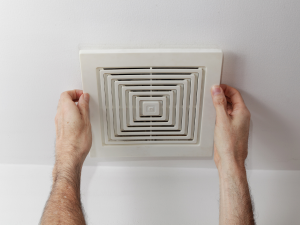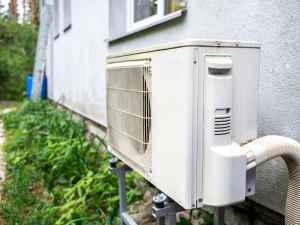Roof ventilation is vital regardless of the weather conditions. When it gets hot, it helps get rid of the excess heat in a home. Similarly, roof ventilation in a cold climate prevents the formation of ice dams on your roof. Regardless of whether you are adding roof vents to your attic or deck, knowing the different types of roof vents, how they function, and their suitability to your home will help you choose the right vent to install in your home. Although all vents have the same purpose, they are designed differently. So, how do you choose the right vent for your home? Before we discuss the different types of roof vents, let’s take a look at the benefits of roof vents.
What are the benefits of roof vents?
- Removes moisture and prevents moisture build-up during winter
- Help keep a home cooler in the summer
- If your system runs on ductwork, roof vents help your system cool more efficiently
- By removing moisture, roof vents prolong the life of your roof as well items in the attic space
Types of roof vents
Ridge vents
This is an exhaust vent that sits at the peak of the roof. They are the most common exhaust vents in most homes. Since they are located at the highest point of a roof, they are effective in letting the hottest air escape from the attic space. They also expel a lot of air given that they run across the roof. For optimal performance, ridge vents should be used in combination with intake vents.
Ridge vents are preferred since they balance a home’s temperature naturally. As such, you will never have a very cold home in the winter or a very hot home in the summer, which ultimately helps save money on utility bills. Ridge vents also have an awesome visual appeal. These vents boost the visual appeal in homes, giving them a sleek design without affecting the pitch of the structure. And if you are dealing with pests such as raccoons, rats, and squirrels, they will be a thing of the past in your home since they cannot get into the ridge ventilation.
The cons? The cost of installation can be high compared to other roof vents not forgetting that water may leak through the vents during storms and even the rainy seasons. Also, if you are located in an area with a warmer climate, the ridge vents may not work properly. And if you plan to install ridge vents, be sure to have slanted pitches on your roof since these vents cannot be installed on a flat roof.
Box vents
Also referred to as louver vents, these are exhaust ventilation vents that take the design of a box. They are installed in bunches on the roof, meaning that you need several since one or two may not provide optimal ventilation. They come in different sizes, with the most common being 18 inches. These vents are perfect for smaller areas that need ventilation. If you are budget conscious, then a box vent is one of the cheapest roof vents that you will come across. And given that they do not have moving parts, you will barely deal with damage issues in case of harsh weather conditions. Also, since they are small, they are barely noticeable and do not interfere with the outlook of your vent as much compared to other roof vents. The only problem is that you will need several box vents if you want to cover a large roof.
Roof turbines
Also referred to as whirlybird ventilation, this is a roof vent that uses wind from outside your house to pull air in your house and out of the attic. While they may be affordable, silent, and energy-efficient, they need at least 5-6 miles of wind per hour to activate and spin. This means that on days when there is only a slight or no breeze at all, they will not be effective. For instance, you may find yourself trapped in a house that is poorly ventilated in the summer when it’s not windy. And even on days with lots of wind, the strength of roof turbines may not be sufficient to provide enough ventilation. As such, they work well in combination with other roof vents.
Cupola vents
Cupola vents are quite uncommon given the high cost and installation complexity. While they provide sufficient ventilation in a home, they are mostly installed for multi-use purposes such as adding aesthetics to a home’s structural design. Some cupola vents even have windows and are large such that one or two people can fit the space. However, the high cost of installation discourages most homeowners from installing these vents.
Hard-wired powered attic vents
These are roof vents that use electric-powered fans to pull stale air out of an attic. Hard wired powered attic vents are very efficient at pulling hot air out and keeping the attic at optimal temperature regardless of the weather conditions. However, they have high operation costs since they consume lots of electricity. They can also make your cooling system less efficient as they can suck out conditioned air along with the heat.
Static ridge vents
Static vents work independently and can be installed anywhere on the roof. Most homeowners prefer these vents since they are relatively easy to install. However, the possibility of a homeowner dealing with bird nests inside the attic is high. Also, you may require several static ridge vents depending on the size of your roof. And if not properly installed, you could find yourself dealing with leaks.
Soffit vents
This is the most popular roof intake vent. Most homes that use soffit vents combine them with ridge vents for exhaust. Depending on the design of your home, you can either install individual soffit vents or continuous soffit vents. While continuous soffit vents are long and wrap around the entire eaves in a home, individual soffit vents only cover approximately six feet and have a close outlook to box vents. Continuous soffit vents are, however, more effective than individual soffit vents. Another advantage of soffit vents is the protection from adverse weather conditions. And since they are not visible from a distance, they do not interfere with the outlook of your roof.
What factors should you consider when buying roof vents?
- Price– While everyone wants to purchase efficient roof vents, the price can be a major hindrance. Ensure to also check energy consumption as a cheap vent may end up being more expensive in the long run.
- The number of roof vents that you need– The number of roof vents to purchase depends on the purpose of the vents as well as the size of your roof.
- Do you need fan-powered or natural roof vents? – While natural roof vents may be the first option for every homeowner, they may not serve you well especially if your home is large.
- What roof vent outlook do you want? – Different vent types have different outlooks. As such, only purchase something that you are comfortable with. If you want a vent that is noticeable on your roof, there are several options that you can choose from.
- What about maintenance? – How often do you plan on undertaking roof vents maintenance? Different roof vents have varying maintenance needs. Be sure to discuss and weigh the option before making a purchase.
Bottomline
There is a wide variety of roof vents in the market, suitable for different homes. While the choice of vent is primarily a personal decision, ensure you also consider other vital factors such as your home style, energy efficiency, cost, and also maintenance needs. You can also contact a professional to ask for help.




